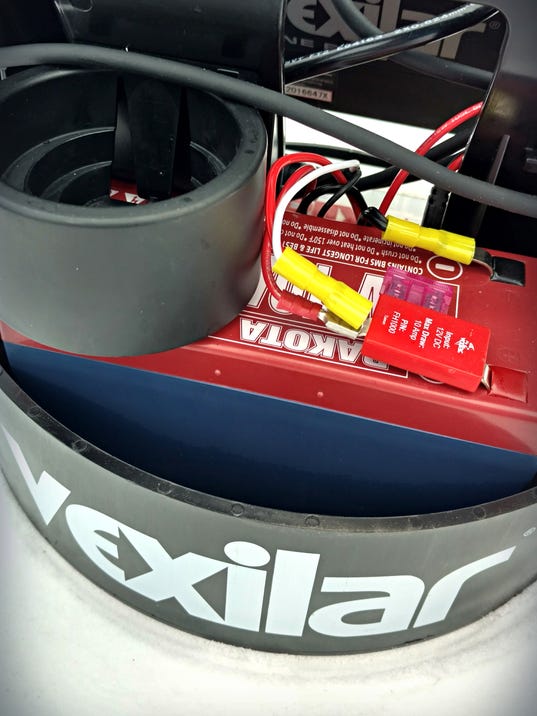 Taking a cue from automobiles and cell phones, the ice fishing industry has turned to a new power source: lithium-ion batteries.
Taking a cue from automobiles and cell phones, the ice fishing industry has turned to a new power source: lithium-ion batteries.
Craig Storms, a New York based fishing guide and all around dabbler in the outdoors, connected the dots not too long ago in his search for a battery for his flasher. Storms is the front man for Dakota Lithium batteries, a Seattle-based company that sells lithium batteries (assembled in Grand Forks, N.D.) and has seen a big jump in demand for their 12 volt line from outdoorsmen.
Storms said he found a different lithium battery for ice anglers on the market a few years earlier, but the price point was so high it was unattainable by most anglers. Instead, he found Dakota Lithium and pushed the company in a new direction – affordable lithium batteries that gave users a higher performing battery for their electronics.
The advantages of lithium are numerous. Weight is a big selling point for some anglers. “Lithium batteries are about a quarter of the weight of a lead acid battery. For guys that do hole-hopping and tournament guys, it’s just incredible,” Storms told me. “The coolest thing was during the 2017 St. Paul Ice Show, saying ‘here, pick this up’ and watching people go ‘whoa!’ each and every time. It was just incredible.”
Beside the weight savings is the consistency in power. Lithium batteries provide a consistent 12 volt power source until they are dead. “Lead acid batteries have a depreciation, kind of like driving your brand new car off the lot,” Storms explained. “Once you first use that lead acid battery, you’ll never get it back to that original charge. It will always be degrading, and degrading, and degrading, until it loses power. With a lithium battery, you’re getting a full 12 volts during the entire time that you are using it.”
The difference a lithium battery provides often shows up at the end of the day. “When you are using your flasher all day, at the end of a day with a lead acid battery, you start seeing lines that you think are interference,” Storms says. “That’s your lead acid battery starting to weaken. With a lithium battery, you don’t get that. It stays clean and sharp, all day. You can use your electronics the way they were intended to be used.”
For ice anglers that use newer electronics, lithium batteries are the way to go. Anglers using liquid crystal displays and underwater cameras that have limited run time with fully lit monitors on sealed lead acid batteries can get an entire day from one lithium battery. Instead of having to charge and bring along two batteries, these anglers can get by with a single lithium battery.
Some anglers are concerned about what happens when their batteries get cold, as some may have experienced drawbacks with other lithium batteries. Drill conversion plates and specialized ice drill attachments that operate on cordless drills may have batteries with cores made of various lithium compounds. Those drills and their batteries may have been designed for use driving screws on home building projects in warm places. Dakota lithium batteries, Storms tells me, have a different chemistry that make them not susceptible to the cold.
The final selling point for converting to lithium batteries is life expectancy. “With a sealed lead acid, you’ll get about 400 recharge cycles. With a lithium battery, you’ll get about 2,000 cycles,” Storms says. Dakota Lithium sold out of their 12 volt batteries in a day and a half at the St. Paul Ice Show and the demand has been steady.
